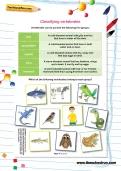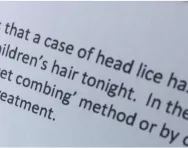Important update from TheSchoolRun
For the past 13 years, TheSchoolRun has been run by a small team of mums working from home, dedicated to providing quality educational resources to primary school parents. Unfortunately, rising supplier costs and falling revenue have made it impossible for us to continue operating, and we’ve had to make the difficult decision to close. The good news: We’ve arranged for another educational provider to take over many of our resources. These will be hosted on a new portal, where the content will be updated and expanded to support your child’s learning.
What this means for subscribers:
- Your subscription is still active, and for now, you can keep using the website as normal — just log in with your usual details to access all our articles and resources*.
- In a few months, all resources will move to the new portal. You’ll continue to have access there until your subscription ends. We’ll send you full details nearer the time.
- As a thank you for your support, we’ll also be sending you 16 primary school eBooks (worth £108.84) to download and keep.
A few changes to be aware of:
- The Learning Journey weekly email has ended, but your child’s plan will still be updated on your dashboard each Monday. Just log in to see the recommended worksheets.
- The 11+ weekly emails have now ended. We sent you all the remaining emails in the series at the end of March — please check your inbox (and spam folder) if you haven’t seen them. You can also follow the full programme here: 11+ Learning Journey.
If you have any questions, please contact us at [email protected]. Thank you for being part of our journey it’s been a privilege to support your family’s learning.
*If you need to reset your password, it will still work as usual. Please check your spam folder if the reset email doesn’t appear in your inbox.
Should we be worried about superlice?

Headlice are the scourge of the primary school classroom. It only takes one child to have them, and before you know it, half the class is infested.
There’s a wide range of tools available to tackle headlice, from natural solutions to nit-killing chemical treatments that promise to get rid of them in one use.


Download fantastic science resources today!
- Experiments And Science Fun pack
- Science Learning Programme for each school year
- All the instructions, questions and information you need
But worryingly, experts are warning of a new breed of ‘superlice’ that are tough enough to withstand the usual treatments.
What are superlice?
The term ‘superlice’ was coined to describe headlice that have become immune to common insecticidal treatments.
An American study found that a shocking 98% of headlice are resistant to pyrethrins and permethrins: the active ingredients in most over-the-counter treatments.
‘They are genetically mutated, making them resistant to chemical solutions,’ explains pharmacist Daniel Brash, spokesperson for LiceTec V-Comb (a combined comb and vacuum that removes lice and eggs).
This makes them harder to get rid of, as the usual frontline shampoos and lotions simply won’t kill them off.
Why have they developed resistance to treatments?
The authors of the US research say that headlice have become harder to wipe out because nit-busting treatments are being overused.
They claim that around two-thirds of parents misuse these products by using them too frequently or not following the instructions.
‘Resistance can be caused by poor technique, which is sometimes due to a lack of awareness,’ says Daniel.
For instance, insecticidal lotions that kill headlice should only be used if your child has an infestation, but many parents mistakenly think they can prevent headlice, and so use them too often.
As a result of being overexposed to chemical treatments, headlice have evolved to withstand them.
What are the consequences of treatment resistance?
Headlice are notoriously contagious, and the new generation of superlice are particularly easy to catch and hard to treat.
For example, imagine one child in your child’s class has headlice. Their parents notice promptly and treat them with an insecticidal lotion straight away.
In theory, that should be sufficient to kill the lice and eggs. The parents assume they’ve got rid of the infestation, and send their child to school the following morning.
But unbeknown to them, the lice are resistant to the treatment, and so their child turns up at school still infested.
When they’re sitting with their classmates doing group work, the lice crawl from head to head – and the infestation spreads.
‘Treatment resistance is causing difficulty for schools who are trying to stop the ongoing cycle of treatment and re-infestation,’ explains Daniel.
‘It’s an embarrassing condition for those conscientious families who are finding headlice more and more difficult to eradicate.’
Daniel also warns that the rise of superlice means that children are being futilely exposed to the strong chemicals in treatments.
‘If an insecticide-based treatment is chosen, the child is being exposed to harmful chemicals with the possibility that it won’t even cure the condition,’ he adds.
Does your child have superlice?
Superlice are the same size as normal headlice, and look exactly the same.
One way to tell if your child has them is if you’ve used an insecticidal treatment that should kill the lice and nits (their eggs) and it hasn’t worked.
This doesn’t necessarily mean they have superlice, as if the treatment instructions aren’t followed to the letter, you may not get rid of all the lice and eggs.
But if you’ve treated your child and they’re still infested, you’ll need to try a different method of removal.
How to treat superlice
‘The resistance of headlice to chemical treatments means that manual removal is becoming the only guaranteed method of treatment,’ Daniel says.
This means combing your child’s hair every few days for two weeks, or longer if you’re still finding lice or eggs.
Use a fine-toothed metal nit comb, rather than a plastic one: ‘plastic combs have flexible teeth so they don’t remove the lice or eggs,’ Daniel says.
‘If nits are left behind, the life cycle will continue, so manual removal using a metal comb is critical.
‘You can't just put a lotion on the hair and think it’s done.’
Can you prevent superlice?
‘The only way to reduce the risk of re-infestation is to comb your child’s hair regularly use a nit comb such as the V-Comb.’
The benefits of combing are that you can do it as often as necessary – daily, if need be – and there’s no possibility of your child developing a sensitivity to the ingredients in chemical treatments.
‘This can help to prevent lice infestations by ensuring that even a new batch of lice is caught early,’ says Daniel.








